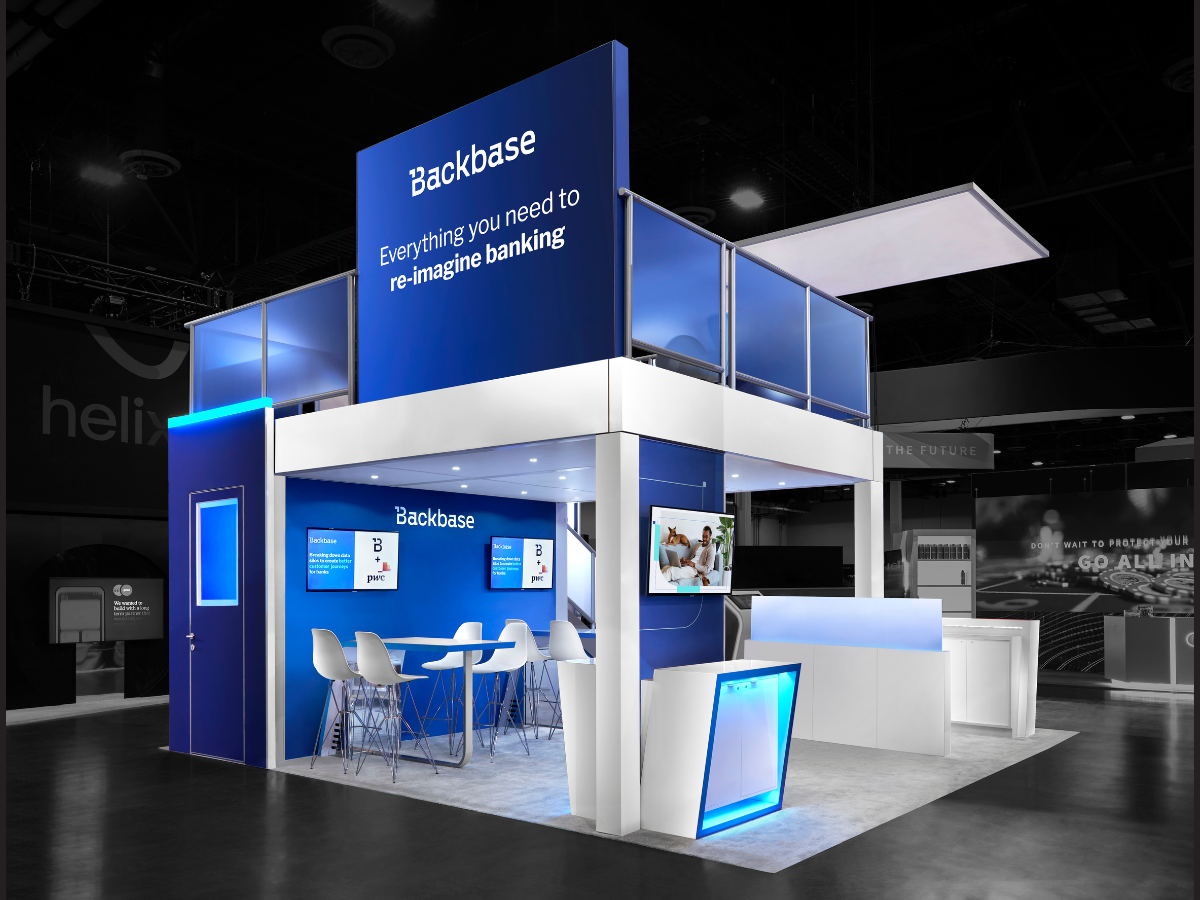With so much competition at trade shows, understanding the components of keeping your booth competitive at both the micro and macro levels will help your brand stand out from the sea of exhibitors. Below, we’ll outline the essential information to gather for your brand’s trade show competitive landscape so that you have the tools to create a successful and memorable experience.
The macro level of your trade show competitive landscape.

The first step in developing an impactful presence at the trade show is to define the key components at the macro level, i.e., the show itself. Ask yourself: What is the purpose of this specific show? Then, anticipate what the attendees expect to determine the message you want them to take away from your booth.
The physical characteristics of the show are significant drivers of engagement. Some questions you’ll need to address will be:
- How big is the floor plan? This will affect your planning of the booth and the elements inside. With a smaller floor plan, you need to utilize the space more wisely and place materials in a more strategic way. This will also be a component in determining your engagement strategy.
- What direction is traffic flowing? This will influence how you arrange your booth. What do you want guests to see first, and how will you most effectively grab their attention?
- Where are the connection points? Connection points are vital to the attendees’ experience at the trade show. Networking is a highlight of the show, so it’s important to figure out the best way to manage your social agenda. You’ll need to be aware ahead of time of any “happy hours” or meetups, and you’ll want to determine how active your role will be. It’ll also be helpful to have a list of potential clients or partners you’d like to connect with and arrange your day to include time to network with them.
- Who are the anchor exhibitors? As soon as you arrive and set up your booth, figure out where the large anchor exhibitors are located and carve out time in your day to spend at those showcases. These are important vendors that will likely influence the attendees, so take notice of their techniques.
- What education will be available? It’s easy to focus on the bells and whistles of your booth, but you never want to lose sight of the fact that you’re there to educate potential clients about your brand. What techniques is the show organizer using? How is your brand communicating your information to ensure your guests clearly understand your products?
The micro level of your trade show competitive landscape.

In this business, things change rapidly from show to show. To remain competitive, it’s crucial to keep up with new developments in the market and be aware of what your competitors are doing. You’ll need to understand a few things about your competitors:
- What is their brand presence? How are they showing up? Are they going big? What’s the highlight of their exhibit— launching a new product, educating their target audience, or more focus on hospitality? How do they stand out across the aisles of exhibits?
- What is the overall message they’re trying to relay? Are your competitors presenting a clear message? Pay attention to how attendees are reacting to the information they’re receiving.
- How are they engaging with the attendees? What booths attract more attention, and what technology and stimuli are they using? Look at things that are working and things that seem poorly received, and adjust your techniques accordingly.
So, how are you going to show up?

The physical environment of the trade show and a clear understanding of your competitors’ techniques will be huge factors in how you showcase your products. Ultimately, it’s most important to best present your booth in a way that stays true to your brand. Ask yourself what message you want to relay and devise a plan to represent that best. Keep in mind what you’ve noticed working for competitors and what has and hasn’t worked for you in the past.
Speaking of keeping track of what works vs. what doesn’t — we have one more free tool for you to use in your trade show strategy process! When it’s time to recap., take the opportunity to gather info and reflect on the event's performance by downloading our Critical Event Assessment.
Conclusion
Many factors go into creating a great show. Some things may be out of your control. Still, the best way to set yourself up for success is to prepare as best you can by knowing the physical landscape on the macro level, being aware of what your competitors are doing on the micro level, and gathering as much information as you can to create a booth that will represent your brand authentically.
The right exhibit partner can help you navigate your brand’s competitive landscape to come up with creative and sustainable ways to stand out from the crowd. Contact us today to get started on your next event!


